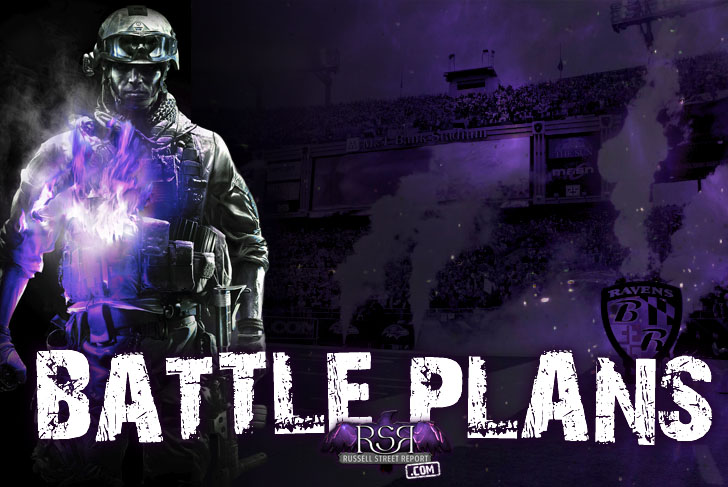Offense
1. Air Traffic Control
If you look at Joe Flacco’s stat line against the Saints, it was a ho-hum effort. He was 18 of 24 for 240 yards and a touchdown. But for my money, Flacco had his best game of the season – going beyond the numbers.
He was consistent in his footwork. His blitz recognition was sharp. And for the first time all season, he really controlled the pre-snap tempo. If the Saints declared their blitz early in the count, he changed the play (either to a run or pass) and waited to snap the ball. It was clear that the Super Bowl MVP put in some time during the bye week to continue mastering his pre-snap preparation.
He’ll face another mental challenge against the Chargers. Defensive coordinator John Pagano uses a lot of pre-snap noise to confuse opposing QBs. He’ll walk rushers up to the LOS to show blitz, only to have them drop post snap. He’ll also use exotic combinations of zone blitzes in which linemen and backers exchange positions. Pagano’s attack is geared to force the QB to make the wrong pre-snap reads.
Flacco will need to stay patient in his post-snap diagnosis of the Chargers’ defense. He can’t rely on what he sees pre-snap as a determiner of where to go with the ball.
In addition, he should continue to use left/right side run audibles to counter certain stacks and overloads that the Chargers show – especially if they pack the inside rush lanes.
2. Keeping the Chargers Out of Their Sub Packages
For the Chargers, drawing the opposing offense in obvious passing situations is a big advantage for their defense. These are the situations in which Pagano can be more creative with his blitz looks and turn his defense into a play-making machine. And with the return of Melvin Ingram and the emergence of Jerry Attaochu, he has two dangerous edge rushers he can turn loose from his sub-packages.
The problem for the Chargers is that their run defense has been porous all season, yielding 4.4 yards per rush. Opposing offenses have been able to run the ball effectively on early downs, creating more short-yardage conversion situations on third down. Pagano hasn’t been able to field his sub-packages in these situations.
Look for the Ravens to follow the same script. They did a nice job mixing up their run/pass ratio against the Saints, but they may need to lean on the run more often on first and second down against an undersized San Diego front. The goal is to attack the Chargers’ base defense early and often from multiple power looks.
3. Tracking Weddle
Safety Eric Weddle has some similarities to Troy Polamalu. He’s not the ferocious hitter Polamalu is. But like the long-haired Tasmanian Devil, Weddle moves all over the field. There have been plenty of times when the Pro Bowl safety started out in the box to show blitz, only to start turning his hips and back pedal into deep coverage right when the ball was snapped.
 Lately, the Chargers have scaled back Weddle’s pre-snap movement and are keeping him in more of a centerfielder role to sure up their pass coverage. But that doesn’t mean Flacco should count on Weddle staying in the same spot on the field at all times.
Lately, the Chargers have scaled back Weddle’s pre-snap movement and are keeping him in more of a centerfielder role to sure up their pass coverage. But that doesn’t mean Flacco should count on Weddle staying in the same spot on the field at all times.
Flacco will need to take his time at the post-snap stage to pinpoint where Weddle is on the field. After all, Weddle’s pre-snap positioning simply can’t be trusted. Depending on where the safety ends up after the snap, Flacco should get a better feel for the type of coverage the Chargers are in and adjust accordingly.
Defense
1. A Rivers Runs Through It
Tactically, there may not be a better QB in the league (outside of Manning) than Phillip Rivers. He is a maestro at the line. Between using motion and changing plays, he gets his chess pieces in position to take advantage of favorable matchups.
Matching wits with Rivers requires patience and agility.
To achieve patience, the Baltimore defenders can’t tip their blitz movement too quickly before the snap or Rivers will crack the code. They need to keep their pre-snap movement to a minimum. And if they do move, they need to wait until right before the snap to show their look.
To achieve agility, the defense needs to keep up with all of Rivers’ actions. When he shifts his receivers around, the defenders will have to make the right switches. They’ll also need to change up their coverages between man and zone so he doesn’t get comfortable using motion to exploit any one type of coverage.
2. Double A Gap Pressure
What’s the best way to break in a new center? Blitz the hell out of him.
When rookie Chris Watt (the Chargers’ fourth different starting center) takes the field on Sunday, he should be introduced to Baltimore with a variance of A gap pressures, including the double barrel rush when both ILBs (Mosley and Smith) shoot the gaps, the cross dog blitz in which the ILBs exchange their positions, and bluff scenarios in which the backers drop into coverage.
3. Fight Through the Clutter
Playing man-to-man coverage against the Chargers can be a hit or miss proposition. On one hand, playing tight press coverage is a good way to slow down slippery receivers like Keenan Allen and Eddie Royal.
However, the Chargers do a great job freeing up their receivers by running crossers, rubs, stacks, and pick routes. When the Ravens dial up man coverage, the defenders will need to be prepared to work through these interference plays. Proper communication and assignment recognition is essential so there aren’t busted coverages in these situations.
One-on-One Matchup to Watch
Corey Liuget versus Kelechi Osemele
Liuget has quietly transcended into a key anchor on the San Diego front seven. He is an active inside rusher who is quick off the snap and plays through the whistle. Liuget is especially disruptive in passing-rushing situations. Osemele has the strength and power to keep the defensive end at bay. He’ll need to impose his will in the running game to wear down his lighter combatant.









